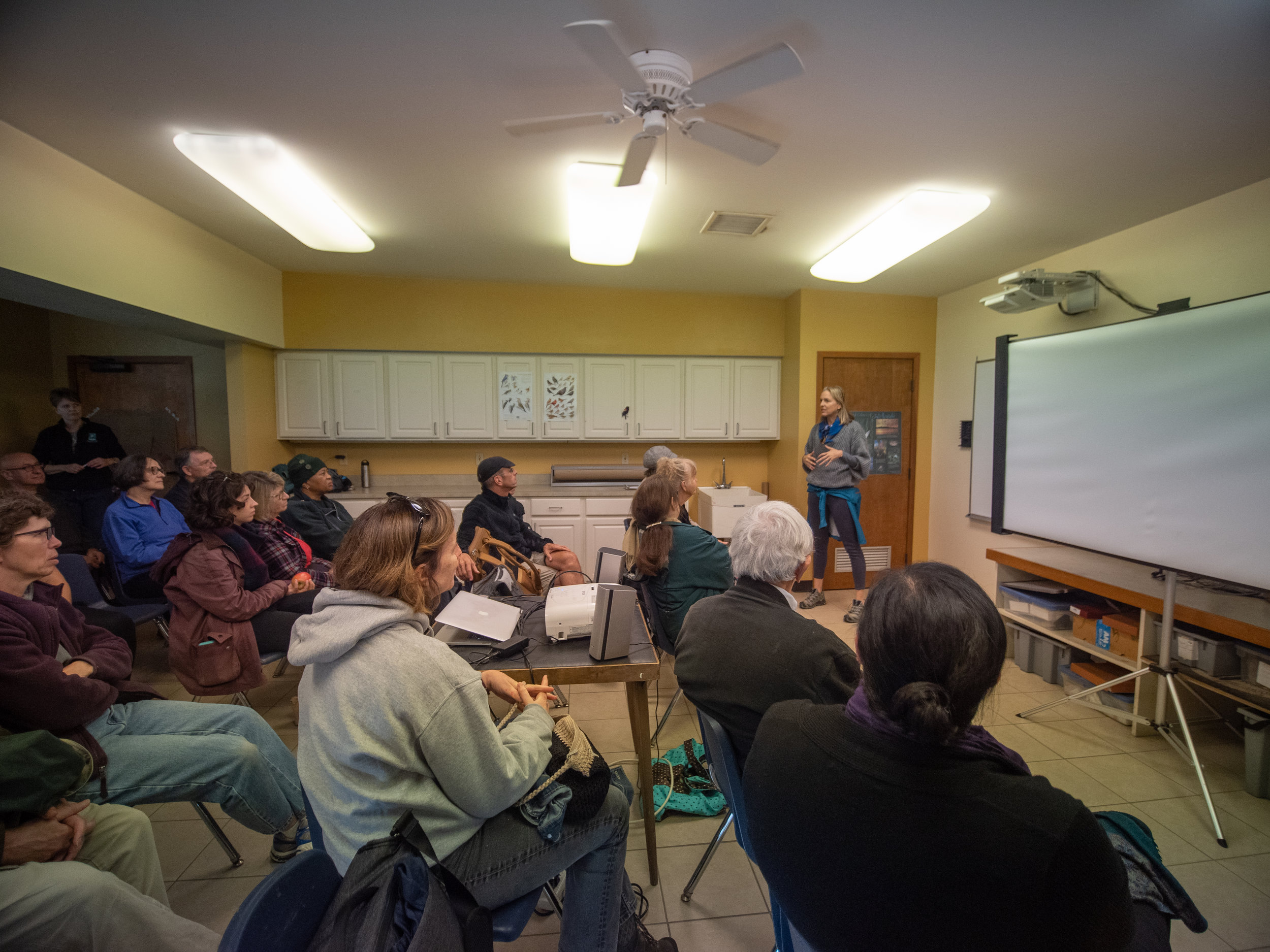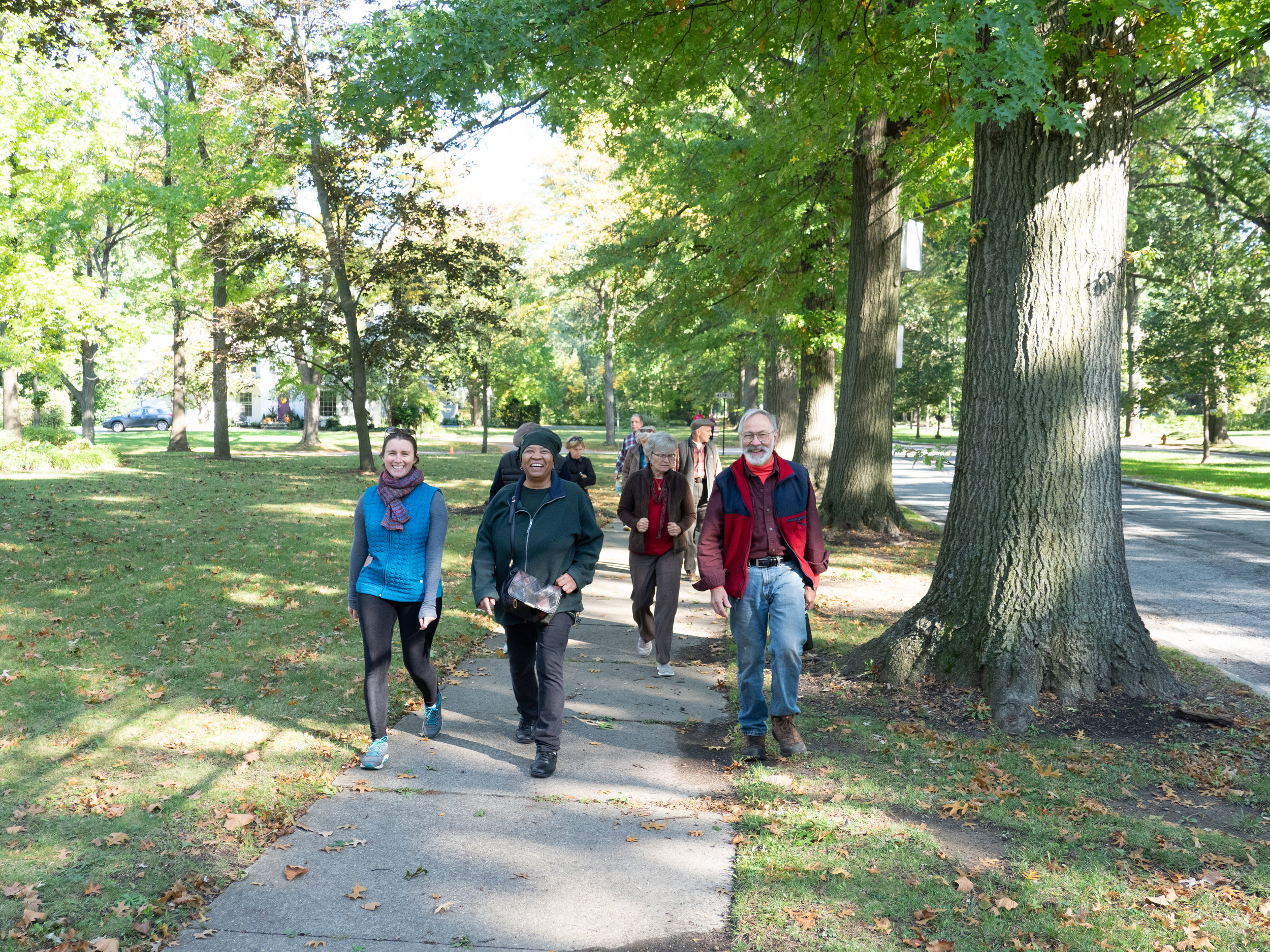Freeway City Premiere Re-Visits Planned Freeway Route
Cinema holds power as a medium for creating a shared community experience while deepening our understanding of the struggles and triumphs of the human condition. I like to find new ways of broadening the cinematic experience beyond the mob of anonymous strangers occupying a dark box for a couple of hours to an immersive experience that build a deeper sense of connection to others and the places that we inhabit.
The premiere of Freeway City, the second episode of the Moving Places series, afforded an opportunity to try out this more immersive cinematic experience.
Freeway City looks at how the automobile rose to dominance following World War II- hastening the retirement of Cleveland’s electric rail system (covered in Streetcar City) while unraveling the tightly layered urban core where entertainment, movement, commerce, work, play, and worship all swirled together in a semi-coherent, if not at times, uneasy mix.
So enchanting was the technological vision of homes distant from the heaving mass of the city connected by long stretches of contemplative highway. Division became the organizing principal of post-World War II urban settlement in Cleveland- and across America. The basic functions of city-life became hermetically segregated from each other. Here you can worship. Here you can shop. Here you can live. Here you can play. Here you can work. And the only way to connect these “single-use” and increasingly distant zones was through the private automobile.
Freeway City looks at the uprising that took place in Cleveland against the suffocating momentum of this new way of organizing urban life. It looks at two separate but reinforcing struggles to preserve and maintain life in Cleveland and its inner-ring suburbs. The first struggle involved Cleveland’s inner-ring suburbs which were shaped by the condensed and mixed-use urban development that surrounded electric streetcar corridors. Here the struggle centered around preserving mixed use commercial districts like Cedar Lee and maintaining a quality of life associated with a place distant from the din and soot of the central city, but close to nature and a sense of neighborliness. The focal point for struggles in the Heights was on the preservation of the Shaker Lakes Parklands. The opening salvo against the ecological destruction posed by the freeway was to establish the Nature Center at Shaker Lakes in the center of a small wetland that sat at the center of a planned highway interchange linking tow major highway systems.
Meanwhile, in Cleveland, Carl Stoke’s historic ascendency as the first African-American to govern a major American City brought a focus on social equity in a city increasingly segregated along racial and economic lines. Those with means fled to the glistening homes with their grecian formula lawns, leaving behind a city with less tax base to deal with rising social needs.
At the heart of these struggles was a rejection of a development model that equated progress with the destruction of major parts of the city and the communities that formed life around them. The organizing idea of “urban renewal” was blight removal- assuming that poverty could be surgically removed from the city and replaced with something better. That the rich ecological zones of the Shaker Lakes parklands merely represented land that could be much more valuable to the city as highways and buildings then mucky wetlands and rambunctious forests.
For the premiere of Freeway City, I wanted to create an experience where people could connect with the legacy of the communities that fought to preserve what today we take for granted as some of the amenities that make east-side life great- vibrant commercial districts, mixed density housing, and green space.
The film was split into three parts. Each part was viewed in a location that would have been eliminate3d had the east-side freeways been built. We began at the Shaker Historical Society- one of the first groups to raise the alarm bells of the planned freeways which would have obliterated one of the Shaker Lakes- the last remnants of the Shakers who established a utopian Christian community on much of what today we know as Cleveland Heights and Shaker Heights. From there, we hiked to the Nature Center at Shaker Lakes, the eye of the storm in the effort to preserve the freeway- established as one of two National Environmental Education Landmarks in the country. We ended at Loganberry books- an independent bookstore in the dynamic Larchmere District. Each installment of the film provided historical context and understanding. Then a hike between each location gave the 50 participants a chance to walk through the corridor where the highway would actually have been constructed. The walk afforded an opportunity to assimilate what the film portrayed while created opportunities for people to interact and converse as they walked between locations.
There is certainly immense value in the traditional cinematic experience- having a collective hallucination of sorts with a large room of strangers. But there is unexplored value in bringing cinema out of the black box theater and more into meaningful interaction between our places and the people who share them.



